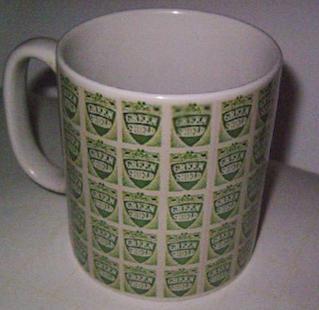Finest hour
POSTED ON 30/08/2008Whether you love it for convenience and value, or hate it for decimating a nation of shopkeepers, you can't ignore Tesco. For anyone who can recall Green Shield stamps and "pile it high sell it cheap"mentality of the Jack Cohen era, it seems improbable that Tesco can have quite so dramatically transcended its humble origins to become not only the nation's leading grocer, but its foremost wine retailer, too. Last year I mentioned that the experienced and affable Dan Jago had been hired to take the beers, wines and spirits department to a new level of quality. What better way then to demonstrate that he's walking the walk than a tasting of Tesco's Finest wine range to celebrate 10 years of the brand?
 Finest* mug
Finest* mug
Sparing you the jargon about re-positioning and growth, let's cut to the chase and explain that Tesco's Finest is the crème de la crème of 250 Tesco wine labels, which account for two in every five bottles of supermarket own-label wine sold in the UK. Finest doesn't therefore actually mean what it says on the tin in that it's not the best bottles on Tesco's shelves, but a brand. The brand consists of a selection of Tesco-backed (and labelled) wines at £5 plus, for which it works with 15 winemakers round the world. The idea started in January 2000 with 35 wines and today the 85-strong brand is an £80m part of the overall Finest brand, which altogether is worth £1.2bn. It's enough to make you wonder if the person who thought of the name Finest was on a commission.
On the plus side, there are wines in the range that punch above their weight. I have already recently mentioned the excellent new, lime-frothy 2005 Tesco Alsace Crémant Riesling, £8.99, but both its champagnes, the lively fresh Premier Cru Brut, £17.98, and the deeper, more intensely flavoured 2002 Vintage Champagne, £19.96, are enduring classics that don't disappoint. The Bisol Prosecco di Valdobbiadene Spumante, £8.99, is a fun example of its kind, if a tad pricey, but I find it hard to summon up enthusiasm for the anodyne Tesco Finest Vintage Cava, £6.78.
The quality of the white wines varies with stars in the new 2006 Sonoma Chardonnay, £8.19, a smoky, rich California example of an elegant cool climate style and the medium-sweet fresh pear fruit of the 2007 Vouvray Demi-Sec Gaston Dorleans, £6.99. The 2007 Finest Albarino, £6.49, from Condes de Albarei, is a refreshing dry white worth its asking price. Australia is a strength with the 2007 Tingleup Riesling, £7.19, from Western Australia, the 2006 Denman Vineyard Reserve Semillon, £7.19, and toasty 2006 Denman Vineyard Chardonnay, £7.99. But the Alsace section is dispiriting: the 2007 Oak-Aged White Burgundy, £6.98, dull, and the Finest Pinot Grigio, £5.98, an oxymoron.
It's hard for an Oak-Aged Red Burgundy, £6.98, to show much character at this price, and I don't get a lot more from the Nuits St Georges, £18.99. Give me New World pinot at these prices; wines such as the Finest Yarra Valley Pinot Noir, £13.49, whose praises I have recently sung. The 2004 Touriga Nacional, £6.19, smells of Vick's Vapour Rub, as does the 2006 Howcroft Estate Shiraz, £7.99, but the 2005 Ribera del Duero, £7.19, is better value. From Italy, the fresh damsony attributes of the Nero d'Avola from Sicily, £5.99, and the sour cherry richness of the 2004 Chianti Classico Riserva, £7.19, stand out. The best of a humdrum Bordeaux selection is the merlot-based 2006 St Emilion, £8.68, while the Rhône tends to rely on appellation names, although here the 2005 Gigondas, £10.99, is a fine blend of plum and raspberry fruit. Sweet wines are excellent: the 37.5cl 2005 Sauternes, £12.49, is seriously luscious, and the treacly 50cl Pedro Ximenez Sherry, £5.49, perfect for gracing vanilla ice cream.

